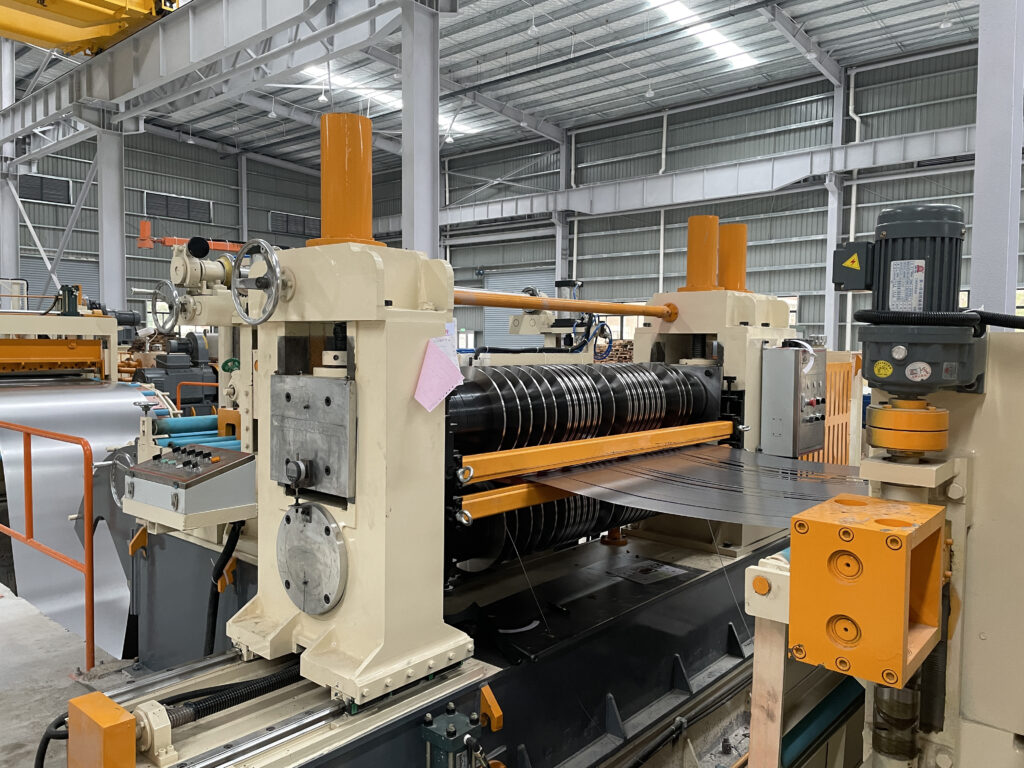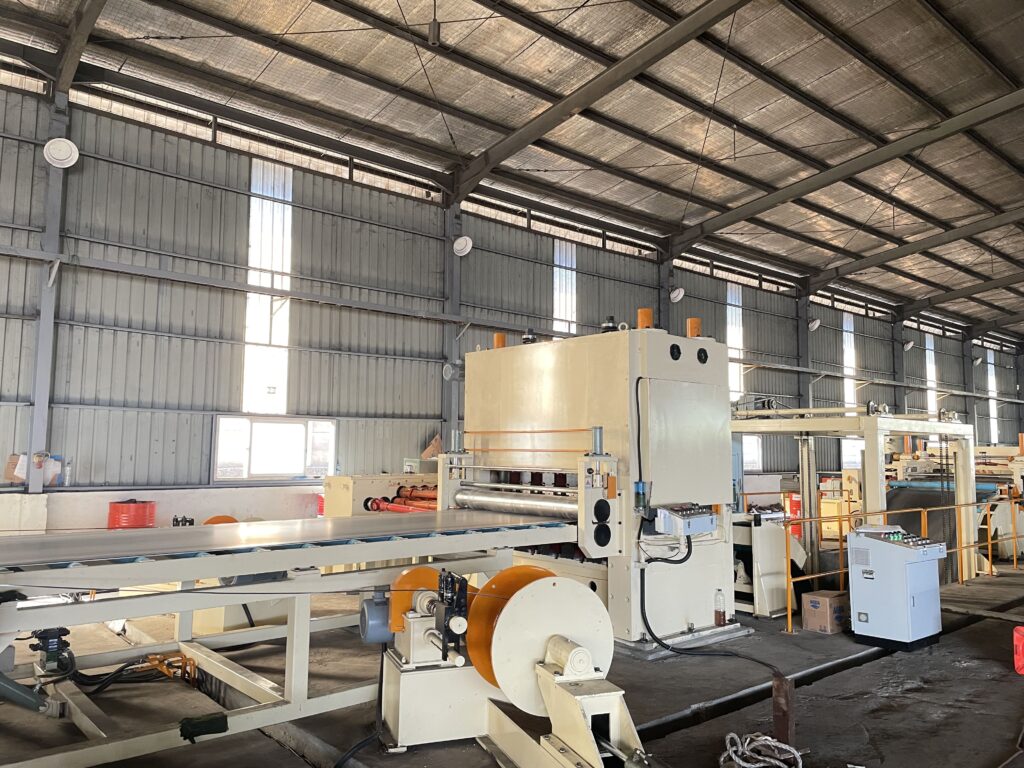Ultimate Guide to Metal Slitting Machine Precision & Width Tolerance
Discover how slitting precision and width tolerance impact product quality. Explore ISO 2768 standards, MD-series specs, and proven methods to boost accuracy and reduce scrap.
Metal slitting precision and width tolerance determine the dimensional accuracy and edge quality of slit strips, directly influencing material utilization, downstream processing, and overall product performance. Precision refers to a machine’s ability to reproducibly cut metal coils into strips meeting exact width targets, while width tolerance defines the allowable variation around those targets—often within ±0.05 mm to ±0.3 mm. Tighter tolerances minimize scrap and rework, improve edge smoothness, and ensure consistent assembly fit. This guide explores the technical foundations of precision and tolerance, examines critical influencing factors, outlines advanced improvement methods, and presents MaxdoMachine MD-series solutions with real-world case insights to support data-driven decision-making.
Defining Precision and Width Tolerance
In continuous slitting operations, precision denotes the repeatability (consistency across multiple cuts) and the absolute accuracy (closeness to nominal dimension) of each strip width. Precision metrics capture maximum deviation from the setpoint, measured in micrometers. Width tolerance specifies the acceptable band of variation, established by application requirements and industry standards.

ISO 2768 General Tolerance Classes
| Tolerance Class | Fine (f) | Medium (m) | Coarse (c) |
|---|---|---|---|
| Applicable Lengths (mm) | ≤ 10 | ≤ 30 | ≤ 120 |
| Width Tolerance (±mm) | 0.05 | 0.10 | 0.20 |
Table: Simplified ISO 2768 tolerance classes illustrating width variation limits for general manufacturing [ISO 2768-mK].
Automotive and aerospace applications often demand ±0.05 mm tolerances, while general construction grades accept up to ±0.30 mm. Adhering to ASTM A568 and ISO 2768 ensures parts interoperate within multi-supplier environments.
Precision’s Impact on Product Quality
Edge Quality and Downstream Performance
Slit edge parameters—burr height, camber, and smoothness—are direct outcomes of precision. Burrs exceeding 0.10 mm height can impair weld quality, hinder coating adhesion, and cause jamming in automated feeders. Consistent precision yields uniform edges that streamline painting, forming, and assembly.
Material Utilization and Scrap Reduction
Every 0.10 mm of excess tolerance across a 2 m coil can generate several kilograms of scrap per thousand meters slit. In a European HVAC plant, installing the MD-1650MM (300–1650 mm width, 0.3–12 mm thickness, 250 m/min max, ~422.5 kW) reduced scrap by 18% and boosted throughput by 12%. Tight tolerances enable optimized nesting and cutting layouts, amplifying raw-material ROI.
Key Factors Influencing Slitting Precision
Mechanical Structure and Blade System
A rigid frame resists vibration, preventing lateral displacement of blades. High-precision linear guides and hardened blade holders maintain alignment under dynamic loads. Blade metallurgy—such as tungsten-carbide tips—preserves sharpness and minimizes wear-induced deviation.
Material Characteristics and Thickness Range
Steel, stainless, and aluminum exhibit distinct elastic recovery and hardness profiles. Transparent parameter mapping—adjusting blade clearance, back-tension, and feed speed for thicknesses from 0.3 mm to 12 mm—ensures stable cut quality across material types.
Tension Control and Feed Speed
Uniform strip tension prevents curl and wandering. Closed-loop tension systems sense force on the coil and adjust brake or dancer-roll settings in real time. While higher speeds (up to 250 m/min) increase productivity, they demand faster control loops to sustain precision.

Advanced Methods to Enhance Accuracy
Automated Blade Positioning
Servo-driven blade carriages enable micron-level adjustments mid-process. Integrated wear sensors detect flank erosion and trigger auto-compensation routines, maintaining strip width without halting production.
Real-Time Width Monitoring
Laser micrometers and ultrasonic gauges deliver continuous width data. A closed-loop controller ingests this feedback, instantly correcting blade positions and tension to counter deviations below 0.02 mm.
Proactive Maintenance and Calibration
Predictive maintenance schedules, based on PLC logs of blade cycles and tension-control variance, inform timely blade regrinding and sensor recalibration. Quarterly full-system audits align mechanical, electrical, and software components with original OEM tolerances.
MaxdoMachine MD Series: Technical Highlights
MaxdoMachine’s MD lineup delivers precision across diverse coil-processing needs:
| Model | Width Range (mm) | Thickness (mm) | Max Speed (m/min) | Power (kW) |
|---|---|---|---|---|
| MD-850 | 20 – 820 | 0.3 – 12 | 250 | 138.5 |
| MD-1350 | 300 – 1300 | 0.3 – 12 | 250 | 318.5 |
| MD-1650 | 300 – 1650 | 0.3 – 12 | 250 | 422.5 |
| MD-2200 | 300 – 2150 | 0.3 – 12 | 250 | 422.5 |
Each model features CNC blade alignment, servo tension control, and industrial-grade PLCs. For full specifications, visit the MD-1650 model page and MD-2200 model page.
Installation, Operation, and Maintenance
Installation involves precision leveling of the base frame, alignment of unwind shafts to mill tolerances, and commissioning of the PLC and HMI interfaces.
Operation best practices include warm-up cycles at low tension, gradual speed ramp-up, and periodic inline width audits.
Maintenance protocols mandate blade inspection every 500 hours, tension sensor calibration every quarter, and preventative lubrication of bearings per ISO Lubrication Standard 11158.
Troubleshooting common issues:
- Edge taper signals blade misalignment—adjust lateral servo offset.
- Oscillating width readings often trace to faulty tension transducer or unstable power supply.
Verify blade gap every 250 hours or after 100 km of material processed to retain ±0.05 mm tolerance.
Yes. Configure higher back-tension and use carbide blades for optimal stainless cutting.
Conclusion and Model Selection Advice
Achieving sub-0.1 mm precision and stringent width tolerance demands synergy of mechanical rigidity, advanced control algorithms, and disciplined maintenance. Select MD-850 for narrow-strip applications, MD-1350/MD-1650 for mid-range production, and MD-2200 for wide-coil processing. Coupling these platforms with data-driven monitoring and ISO-aligned practices secures consistent quality, maximizes yield, and accelerates time-to-market for high-precision metal components.




